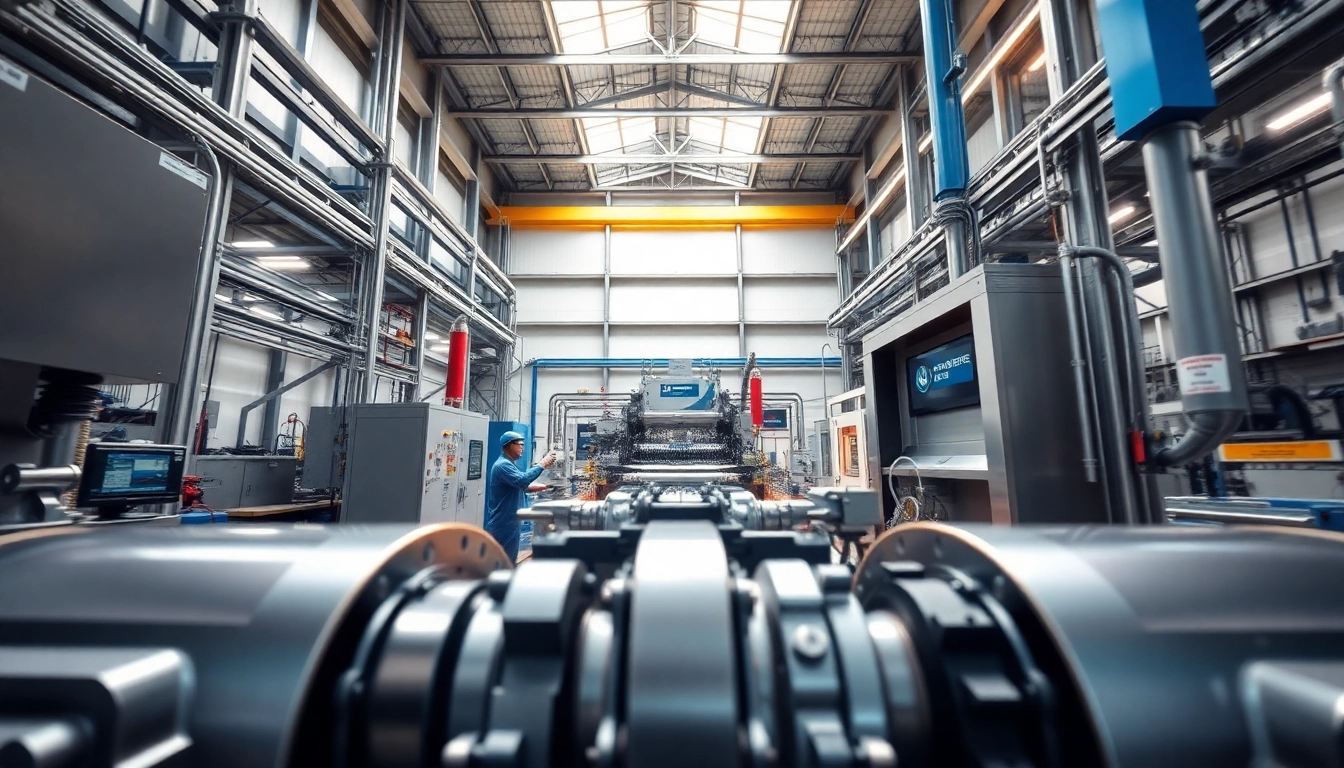The Importance of High Pressure Diecasting in Malaysia
High pressure diecasting has become a cornerstone of modern manufacturing in Malaysia, significantly impacting diverse industries from automotive to electronics. This advanced technique allows for the rapid production of high-quality components with intricate designs and superior finishes. In a competitive landscape, manufacturers who utilize high pressure diecasting malaysia can achieve critical efficiency gains while ensuring product excellence. Understanding the nuances of this process is imperative for companies aiming to maintain relevance and growth in today’s market.
Understanding High Pressure Diecasting Technology
High pressure diecasting involves injecting molten metal into a mold at extremely high pressures, typically ranging from 10,000 to 100,000 psi. This method allows for a faster cooling time and higher precision, resulting in parts that can have complex geometries. The technology is largely employed for materials such as aluminum, zinc, and magnesium, which are favored for their lightweight properties and exceptional mechanical strength. As industries increasingly prioritize both efficiency and quality, high pressure diecasting stands out as a vital process.
Benefits of Diecasting for Manufacturers
- Cost Efficiency: The high-speed operation of diecasting reduces labor and production costs, making it an economically viable choice for mass production.
- Precision: The high pressure ensures that metal fills every part of the mold, leading to superior dimensional accuracy and fewer defects.
- Reduced Waste: With minimal excess material, the process is not only resource-efficient but also helps meet sustainability goals.
- Versatility: Diecasting can accommodate a wide range of designs and shapes, enabling innovation in product development.
Challenges Faced by the Diecasting Industry
Despite its advantages, the diecasting sector faces certain challenges that require strategic navigation. These include:
- Equipment Costs: Investment in high-quality machinery can be substantial, which may deter smaller enterprises.
- Skill Shortages: The need for skilled labor to operate sophisticated diecasting machines is critical, yet often lacking.
- Market Fluctuations: Material costs and demand variability can impact production schedules and profitability.
Key Applications of High Pressure Diecasting
The versatility of high pressure diecasting ensures its application across various industries, each benefiting uniquely from the process’s distinct advantages.
Automotive Industry Insights
In the automotive sector, the need for lightweight yet durable components is ever-increasing. High pressure diecasting allows manufacturers to produce complex parts such as engine blocks, transmission cases, and intricate body panels that meet stringent safety and performance standards. The capability to produce these parts quickly and cost-effectively positions diecasting as a preferred method in automotive manufacturing.
Electronics and Electrical Components
Electronics are central to a modern lifestyle, necessitating components that not only perform well but also withstand rigorous use. High pressure diecasting enables the production of housings, heat sinks, and frames that are both lightweight and conductive. This is crucial in ensuring longevity and efficient thermal management in electronic devices.
Aerospace and Structural Applications
The aerospace sector demands high precision and reliability, characteristics that high pressure diecasting offers. Components such as brackets, fittings, and various structural elements benefit from the strength and weight savings that diecasting provides, contributing to improved fuel efficiency and overall performance of aircraft.
Best Practices for High Pressure Diecasting Manufacturing
To maximize the benefits of high pressure diecasting, manufacturers must adopt best practices that enhance efficiency and product quality.
Optimizing Die Design for Efficiency
Effective die design is key to achieving optimal results. Considerations such as the shape of the die, venting, and cooling channels can significantly influence the quality of the finished product. Employing simulation software during the design phase can also help identify potential issues before production begins.
Material Selection and Its Impact on Quality
The choice of material directly affects both the cost and performance of diecast parts. Aluminum alloys are often preferred due to their lightweight and corrosion resistance, while zinc is used for its strength and finish. Understanding the properties of each material can guide manufacturers in making informed decisions that align with project specifications.
Quality Control Measures to Ensure Excellence
Implementing rigorous quality control measures at every stage of the diecasting process is essential to maintain high standards. Techniques such as X-ray inspection and dimensional analysis can identify defects early, preventing costly rework and ensuring that products meet customer expectations.
Future Trends in High Pressure Diecasting
The diecasting landscape is evolving, with several key trends anticipated to shape the industry in the coming years.
Emerging Technologies and Innovations for 2025
Technological advancements, such as the integration of automation and AI-driven analytics, are set to enhance diecasting processes. Smart manufacturing systems that monitor operations in real-time will lead to increased efficiency and reduced downtime, providing a competitive edge for those who adapt early.
Sustainability Practices in Diecasting
With a growing emphasis on sustainability, the diecasting industry is exploring ways to reduce its environmental footprint. Incorporating recycled materials, energy-efficient production methods, and waste-reduction strategies will not only comply with regulations but also meet the values of eco-conscious consumers.
Market Predictions and Growth Opportunities
The global demand for diecast components is expected to surge, particularly in emerging markets. By aligning production capabilities with these trends, companies can position themselves for substantial growth. The automotive, aerospace, and electronics sectors will remain significant contributors to demand, driven by innovation and advanced manufacturing techniques.
Choosing the Right Diecasting Partner in Malaysia
The selection of a diecasting partner is crucial for manufacturers looking to achieve operational success and product excellence. Evaluating potential partners involves considering several factors:
Evaluating Experience and Expertise
Experience in the industry is a key indicator of a partner’s capability. Companies with a proven track record in high pressure diecasting can offer insights that enhance production and product quality.
Assessing Technological Capabilities
Investments in modern equipment and technology indicate a commitment to quality and efficiency. Assessing a potential partner’s technological capabilities—including automation, CNC machining, and simulation software—can reveal their ability to meet varied production needs.
Understanding Customer Support and Services
Reliable customer support is paramount in maintaining smooth operations. Partners who provide comprehensive services, from initial consultations to after-sales support, contribute to a more seamless production experience.
